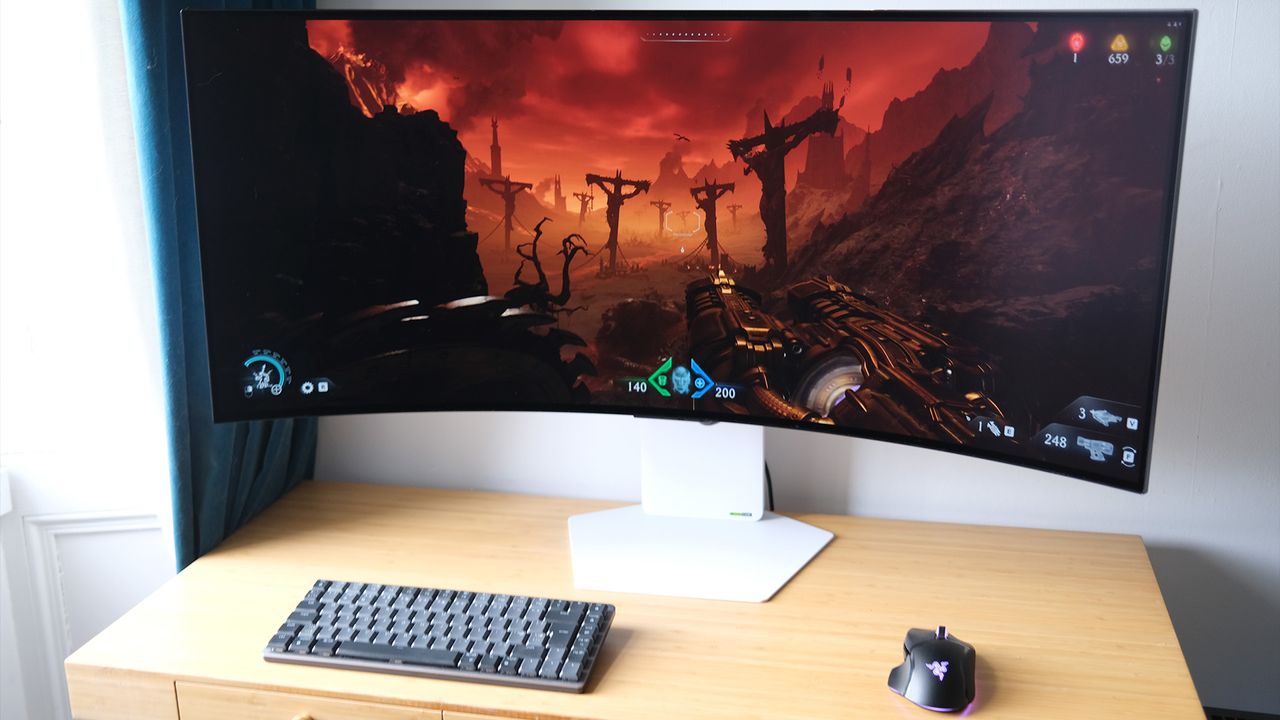
(Image credit: Future)
The best ultrawide monitors have been an impressive part of the gaming market for years now, but they're still only slowly growing their market share – they're niche by design, offering unique form-factors for those most invested in their PC gaming setup.
LG has been making excellent UltraGear options for years now, but its 2025 revision of the lineup is nonetheless impressive. With some smart design tweaks, it makes ultrawides more attractive than ever. I lived with the 39-inch GX9 to see how it fared, and came away thoroughly won over.
LG GX9 monitor review: Price & Availability
The GX9 is available now, having been unveiled earlier this year and rolled out – although you may have to search around to find it in stock, since it's not the most mainstream of products.
It comes in at $1,599 or £1,299.98, which can't be labelled as anything other than a steep price tag. That said, this is a huge monitor with some features that rival LG's best TVs, so the more research you do the more you'll see it as a relatively expected asking price for a curved OLED like this.
LG GX9 review: Design
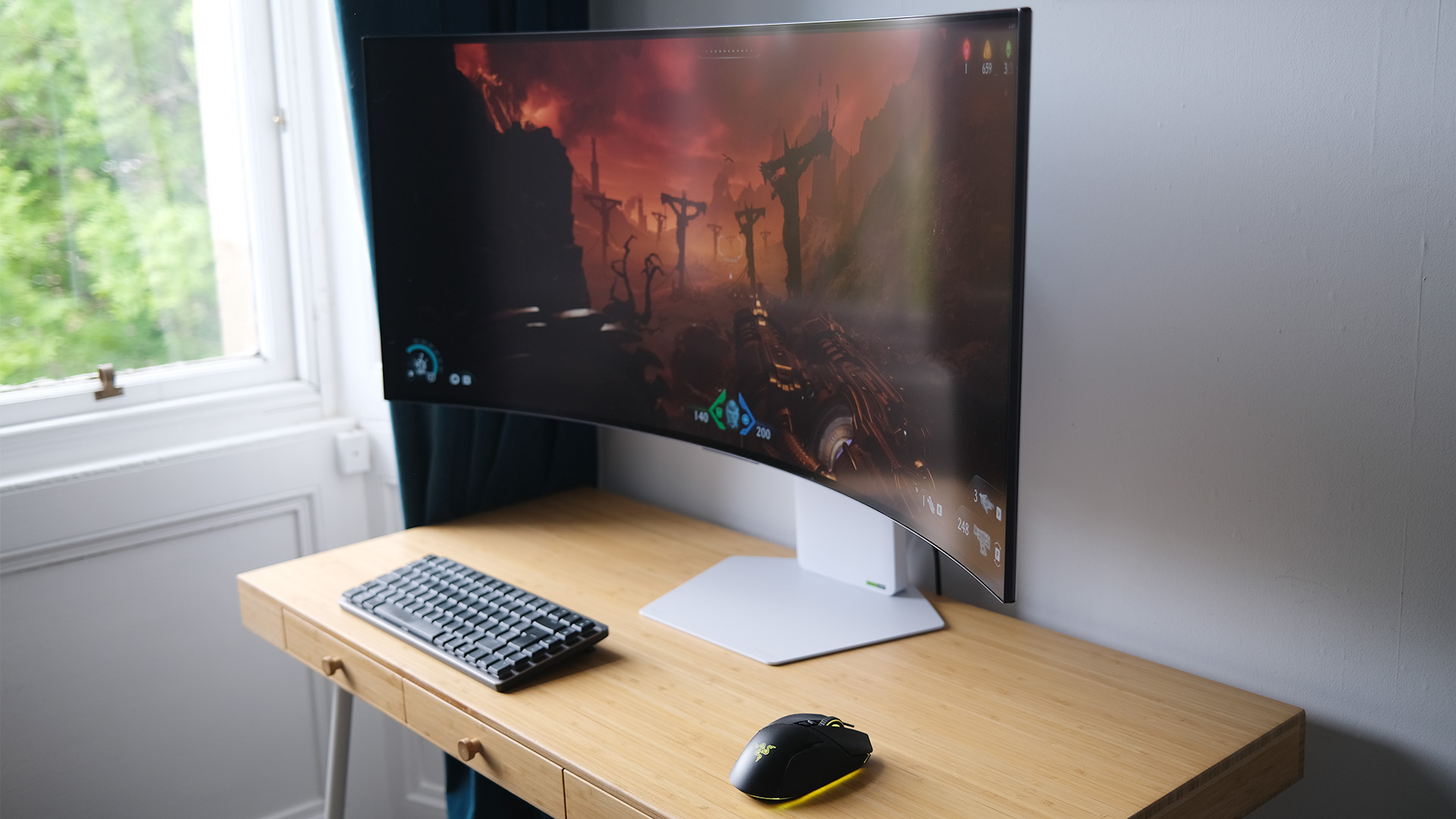
(Image credit: Future)
There's no getting around it – the 39GX9 is big. This is a monitor that absolutely dominated my relatively modest desk, which normally houses a 27-inch flat panel comfortably. It's massive, and as you'll see in the gallery a little further down, its 800R curvature means it comes forward across your desk by a good margin too.
The aspect ratio LG uses is 21:9, and by being a little taller than many ultrawide monitors, it does look slightly less preposterous in terms of width to height. Still, it's large and you're going to have to have a station that can accommodate it ready.
The monitor has a chunky stand that has been heavily changed from previous versions, notably with a new hexagonal plinth base, which is far more convenient than the large legs of other models. It makes much more of the actual surface of your desk usable, and I'm glad LG changed it.
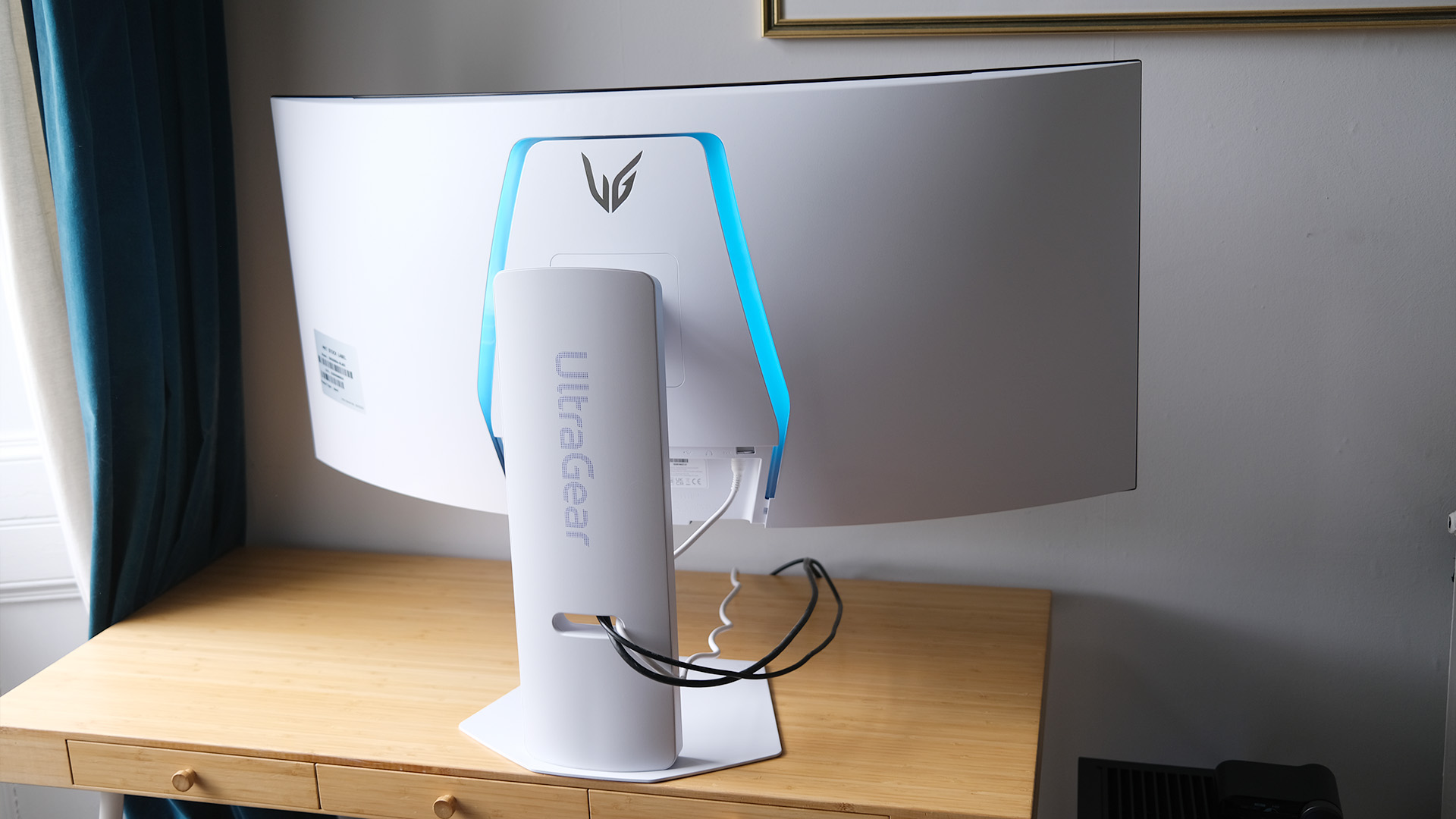
(Image credit: Future)
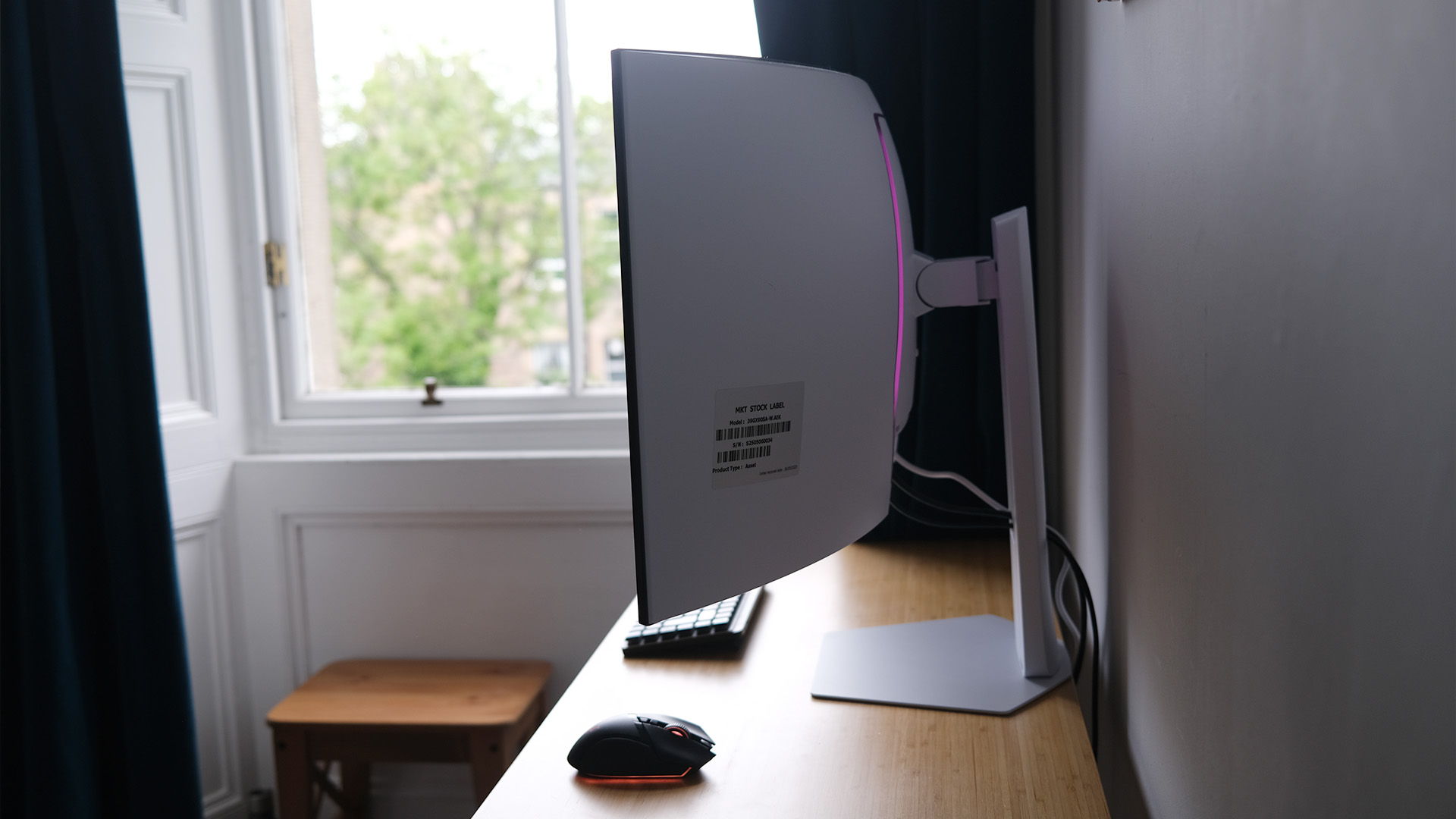
(Image credit: Future)
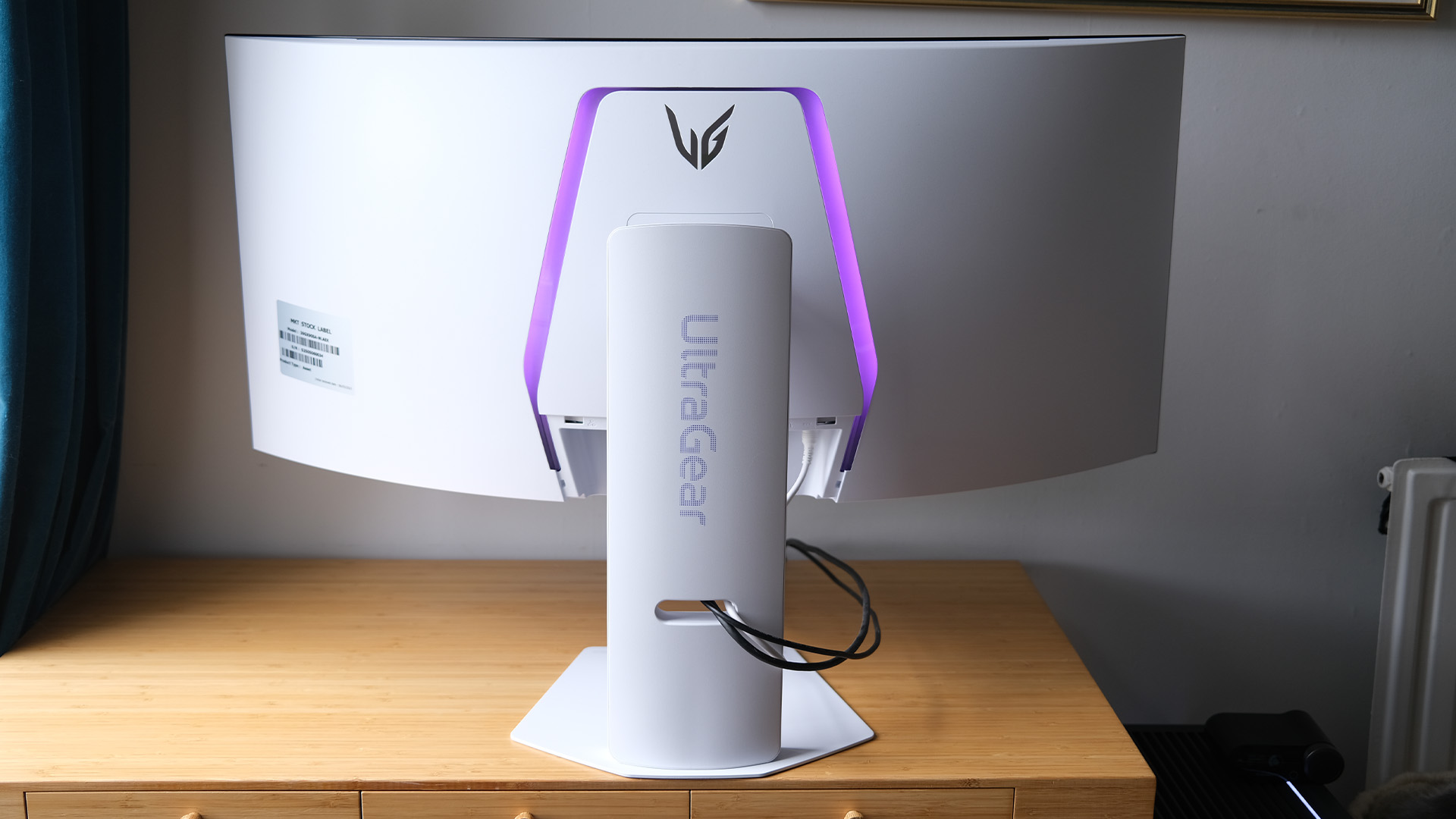
(Image credit: Future)
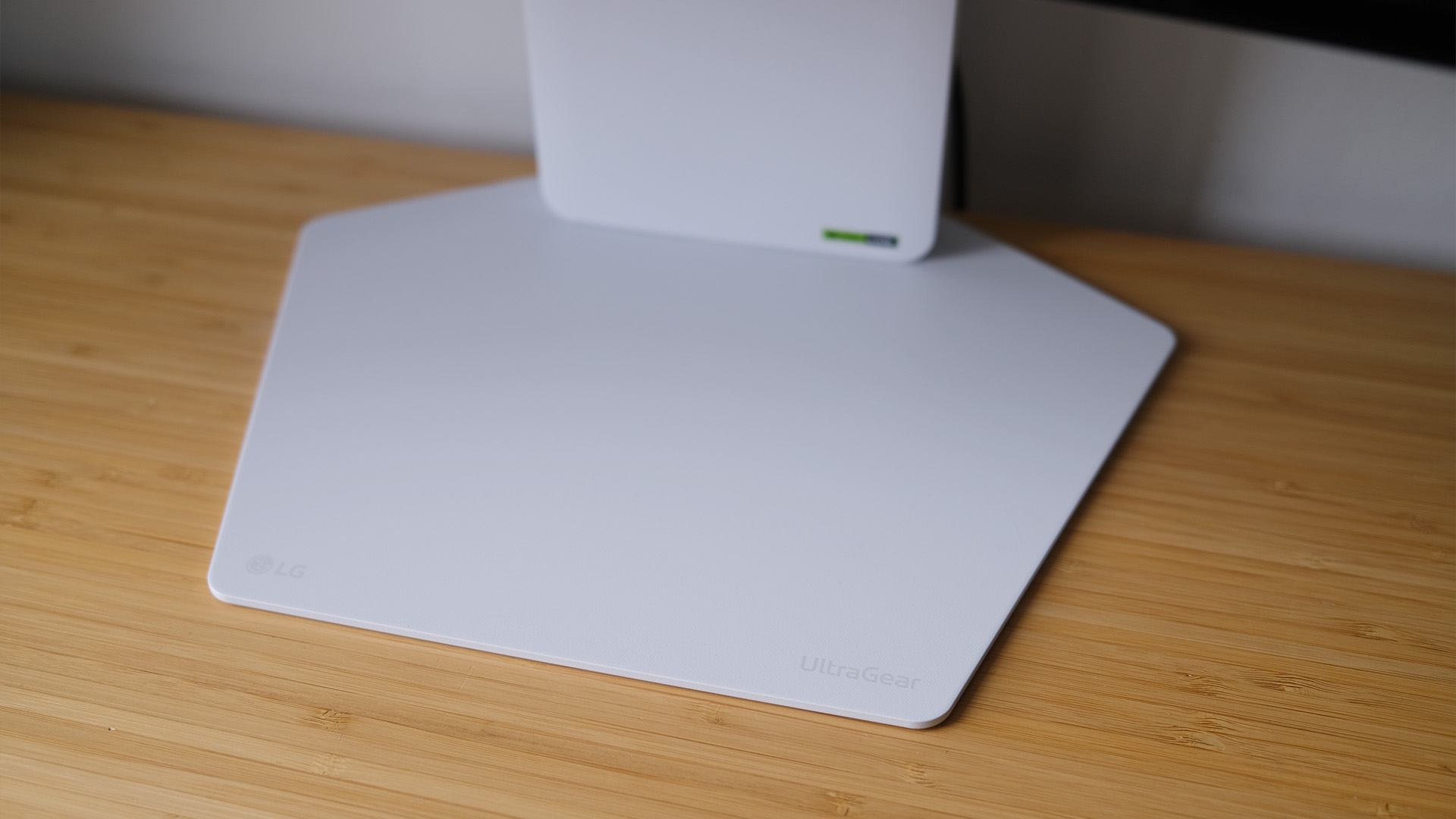
(Image credit: Future)
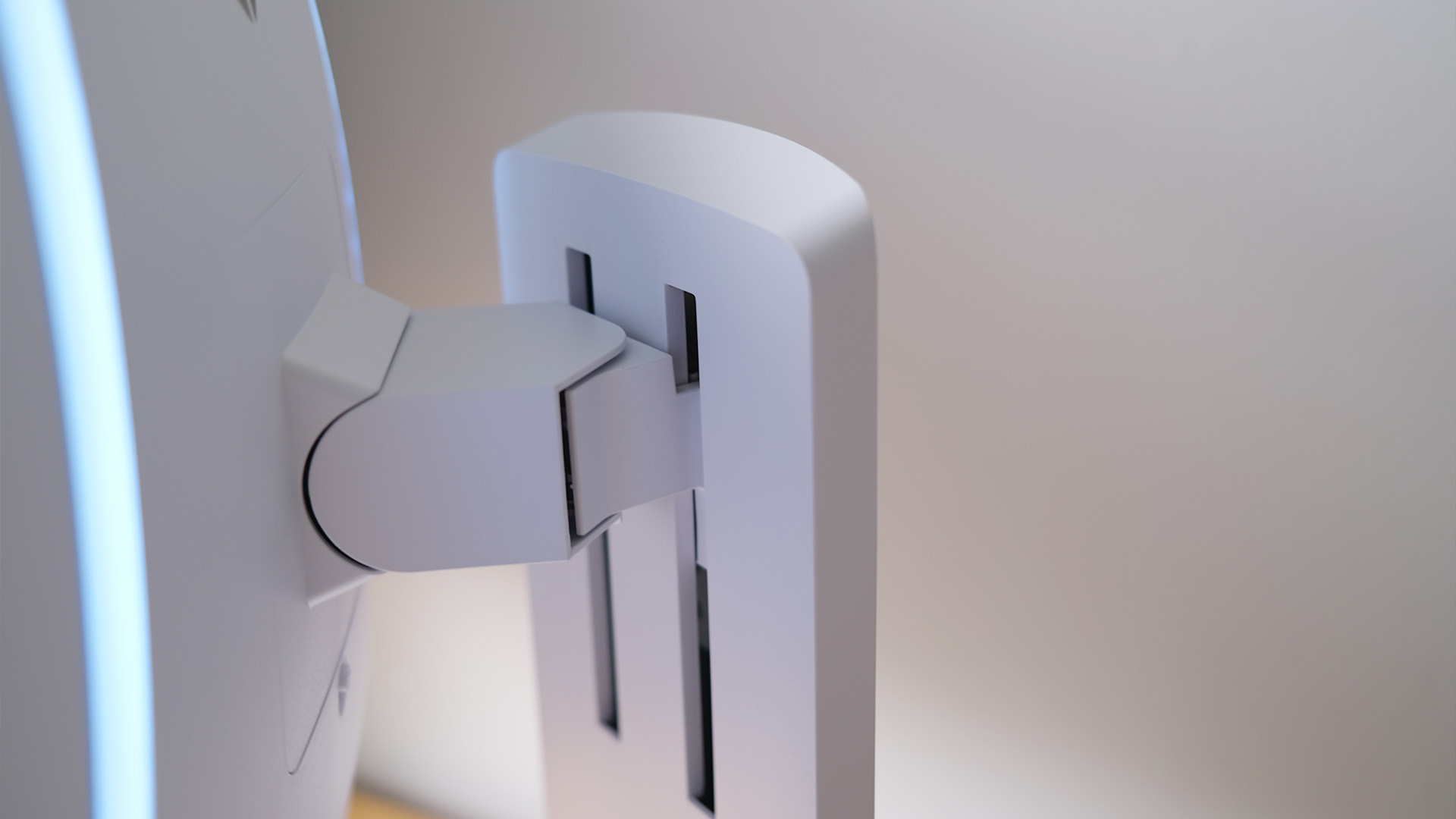
(Image credit: Future)
The back of the monitor hides a strong and sturdy vertical stand that can be height-adjusted easily, and which can tilt left or right. It all feels really strong and safe, but those who want to mount their monitor on an arm will be able to do so, too.
The back also holds some gentle RGB lighting, although this is borderline pointless since you'll never be looking back there, and it's not strong enough to make any Philips Ambilight-like effects on the wall behind it. There's a little bit of cable management potential, but you won't need to do a huge amount in most scenarios.
The power brick that comes with the monitor is worth a mention, though. It's external to the monitor and is the biggest I've ever come across – more than large enough to require some extra thought in terms of hiding it away under your desk.
Under the monitor's panel, you'll find a small control nub that also acts as the power button. Mostly, however, you'll use the included remote, which is much like a TV remote – and makes changing your settings or inputs quick and easy.
LG GX9 monitor review: Specs & Features
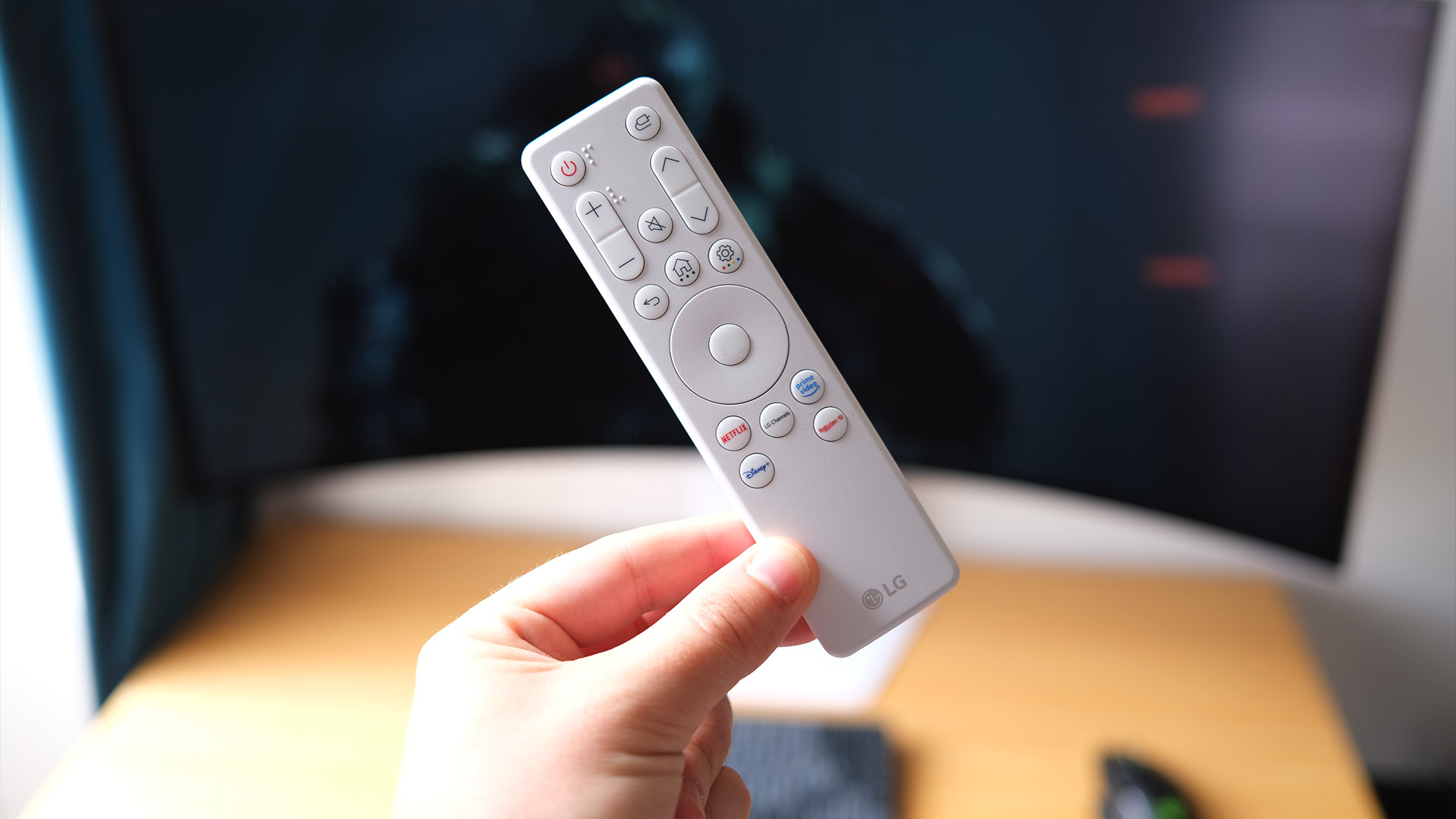
(Image credit: Future)
So, what about the actual specs of this thing? Well, this is a 39-inch WQHD (3440x1440) OLED display. That means it runs at a really sharp resolution across that whole panel, and gives you a lot of room for on-screen elements.
The OLED panel here brings with it that tech's classic inky blacks and rich colours, but LG has worked hard to improve the brightness in recent years, too. With a peak brightness of 1300 nits, this panel can be nicely luminous, and I played it next to a window consistently without issues.
Being a dedicated gaming monitor, you get a 240Hz refresh rate and response times of as little as 0.03ms, both of which mean that a powerful gaming rig (like my 5070 Ti machine) can push it to really impressive levels of smoothness. Depending on your setup, it's also compatible with a range of display tech: VESA ClearMR 13000, Nvidia G-Sync and AMD FreeSync Premium are all covered.
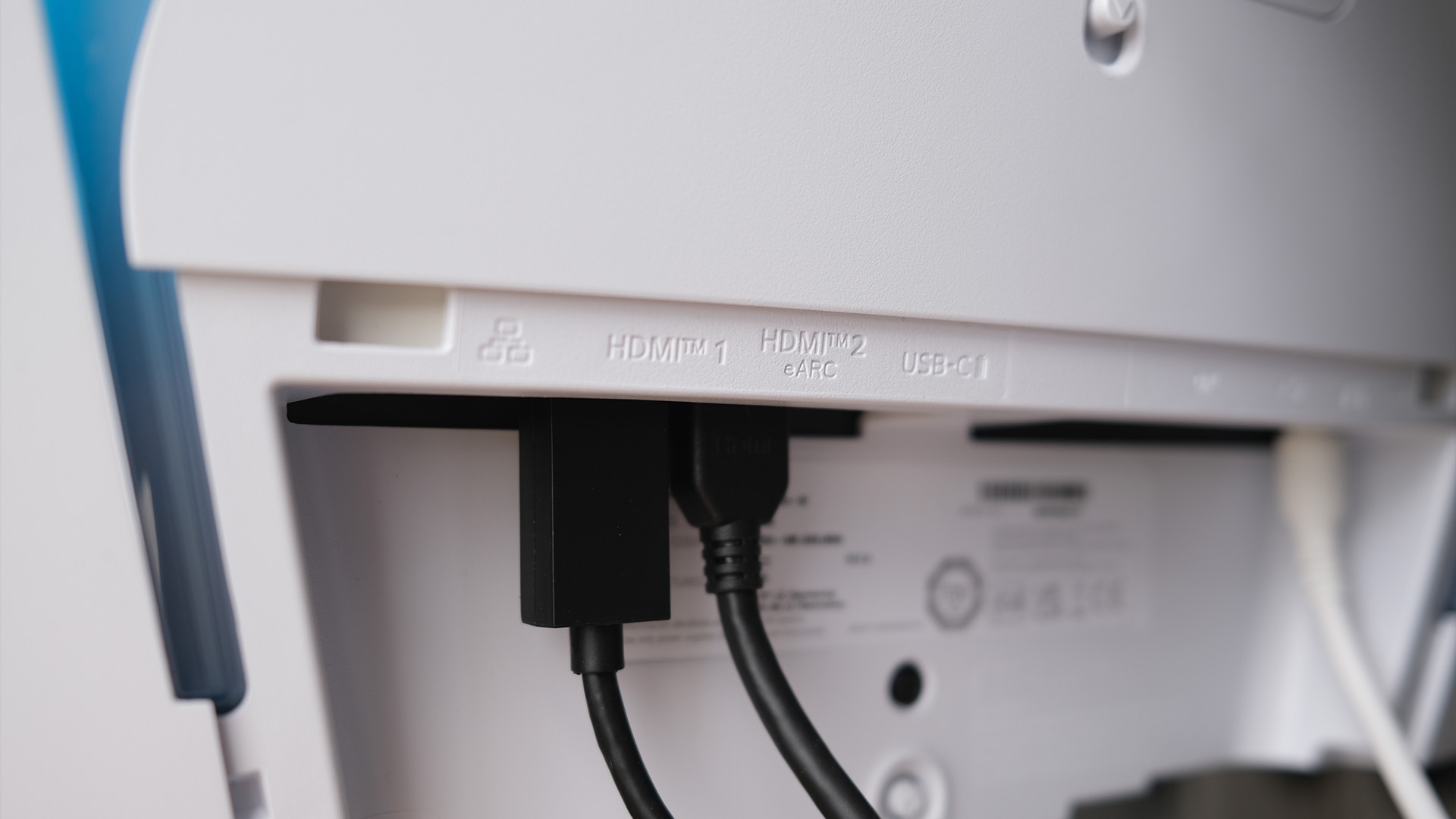
(Image credit: Future)
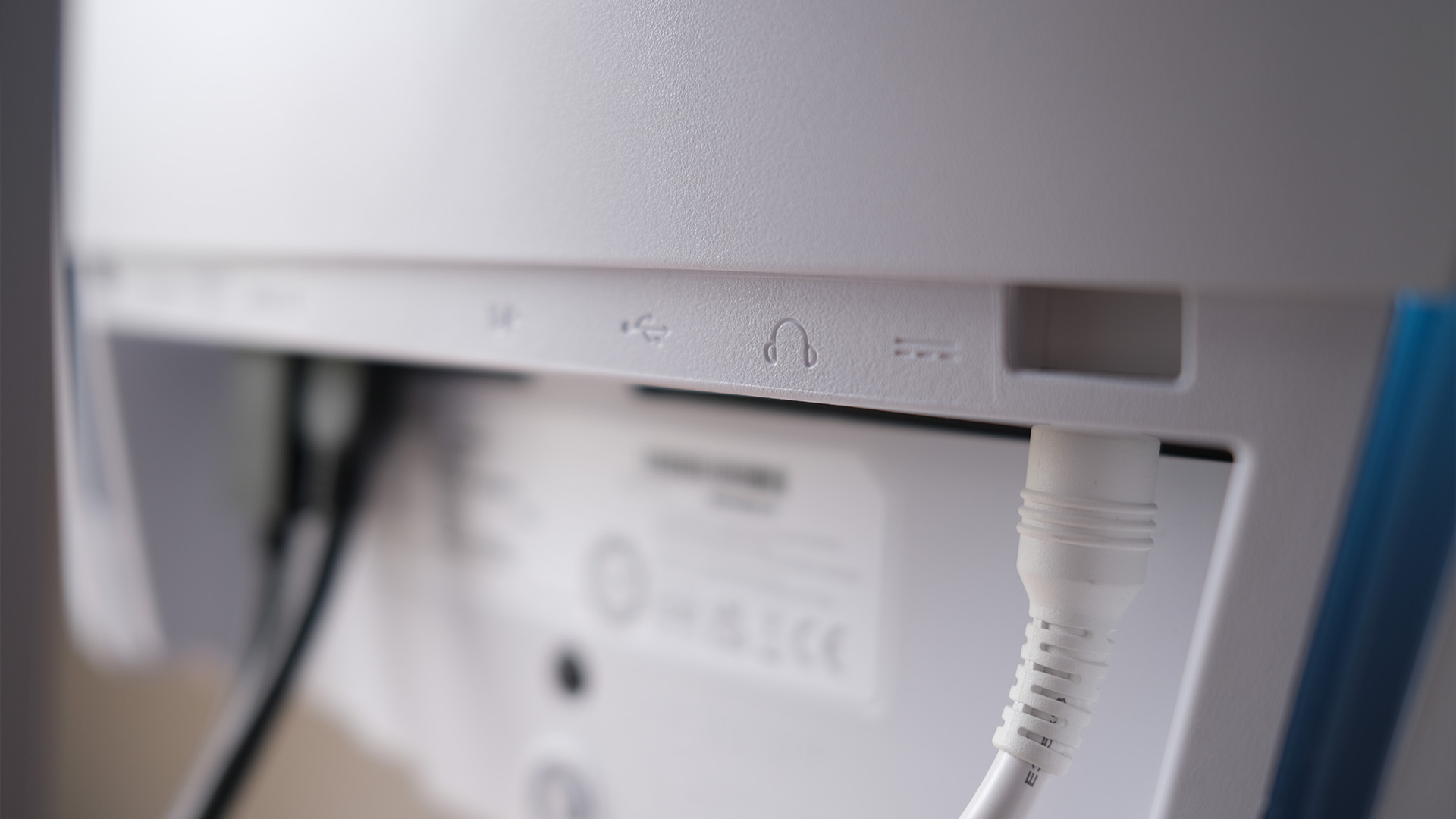
(Image credit: Future)
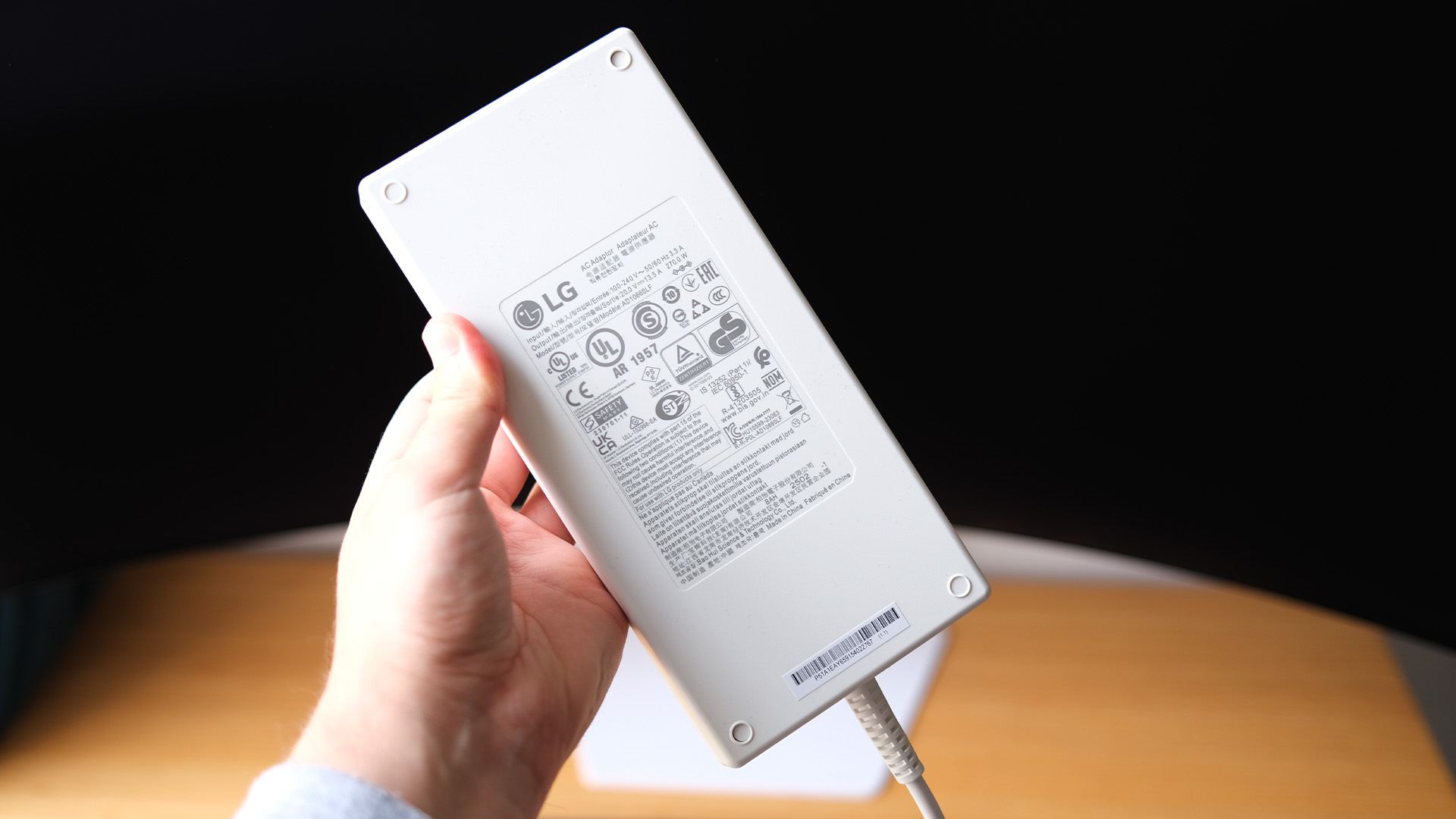
(Image credit: Future)

(Image credit: Future)
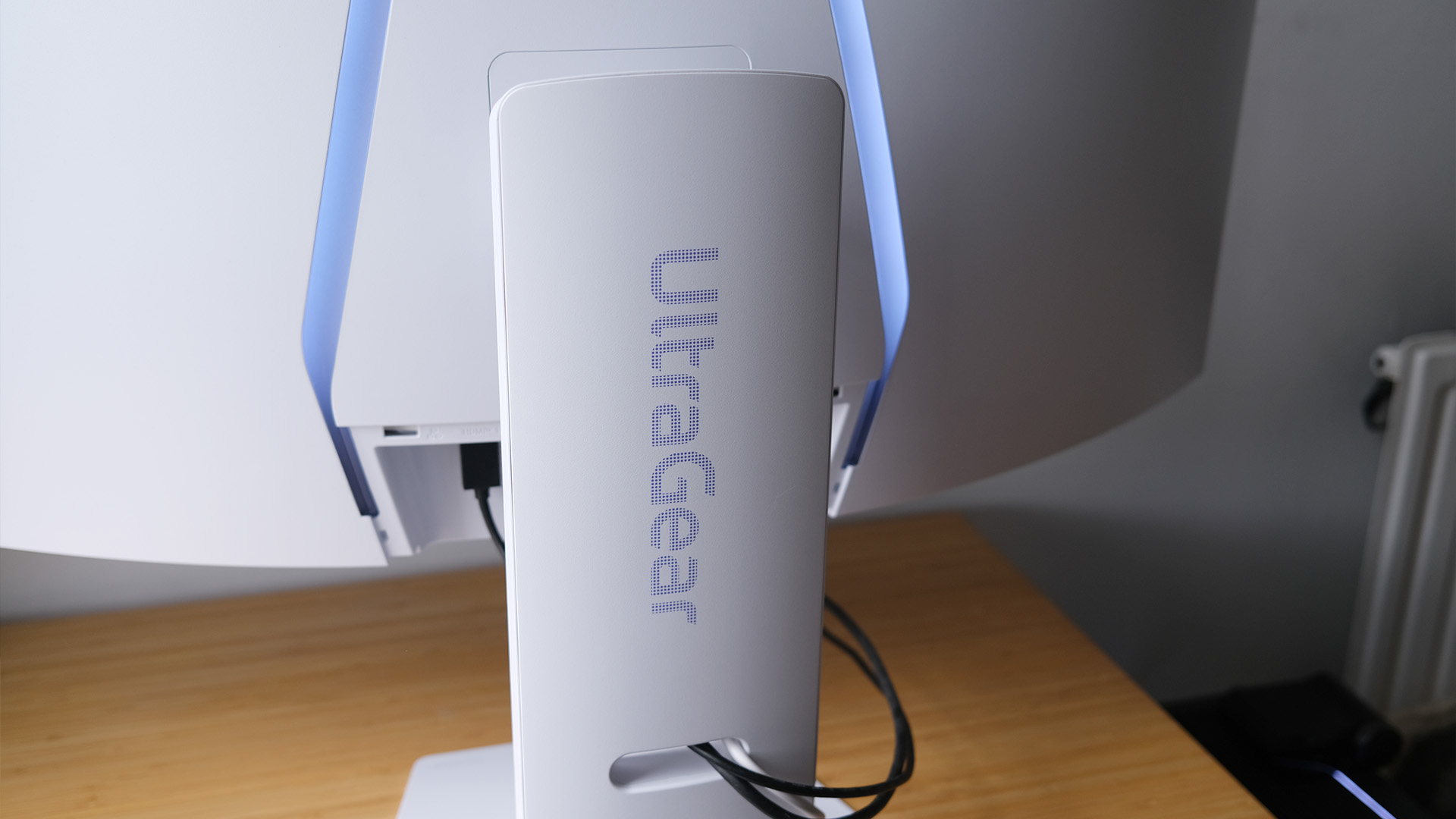
(Image credit: Future)
Ports are a huge deal for this sort of monitor, but there are only two HDMI 2.1 ports here – that may or may not be an issue for you, although I can't imagine why you'd need many more. There's also an all-in-one USB-C port that can deliver power to a connected laptop while also acting as a display cable, along with a DisplayPort 1.4.
The monitor has built-in speakers which can get impressively loud (way too loud, in fact, to comfortably sit right in front of). There's also a headphone jack on the monitor itself if you like to work that way.
Finally, the remote that controls all of this is your shortcut at all times. It has an input button and a settings button for quick access, with the UI that pulls up being very familiar if you've used the gaming mode on an LG OLED TV recently. There are also shortcuts to the built-in streaming apps that ship on the monitor, if you want them – that curve makes them pretty weird to actually use, though.
LG GX9 monitor review: Performance
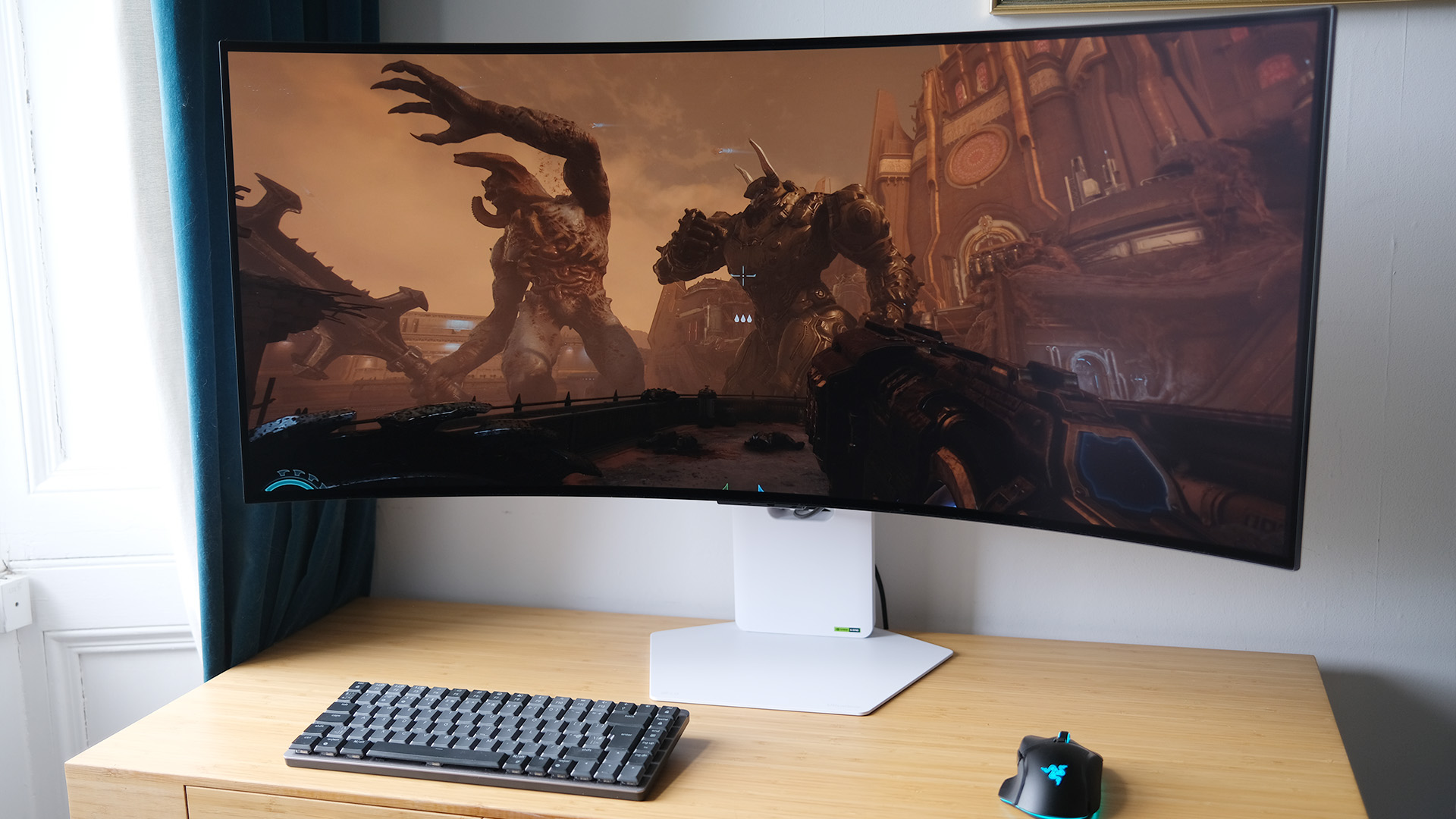
(Image credit: Future)
Finally getting round to actually plugging the monitor in, I found the 39-inch GX9 to be something of a revelation. Full disclosure, I haven't used many ultrawides for sustained periods before – and indeed would have counted myself as a sceptic about their practicality.
Obviously, the sheer size of this GX9 on review doesn't do much to allay that issue, but on a bigger desk I could see it fully winning me over. After all, that might let it get further back enough that I wouldn't feel the warmth of its OLED pane on my face while gaming – underlining the fact that this is a power-hungry beast of a panel.
I played almost all of Doom: The Dark Ages on the display, as well as about 5-hours of Clair Obscur: Expedition 33, both of which have native support for the right resolution and aspect ratio required. Both looked pretty stunning, too, with bold and lush colours that really sold their immersive worlds.
Of course, the machine you connect has a bearing on how the monitor looks. My work laptop is a MacBook Air, and it honestly struggled with the resolution it was outputting, leading to some banding on-screen at times. On my PC, though, this wasn't an issue, and I was able to make the most of the refresh rate on offer, too.
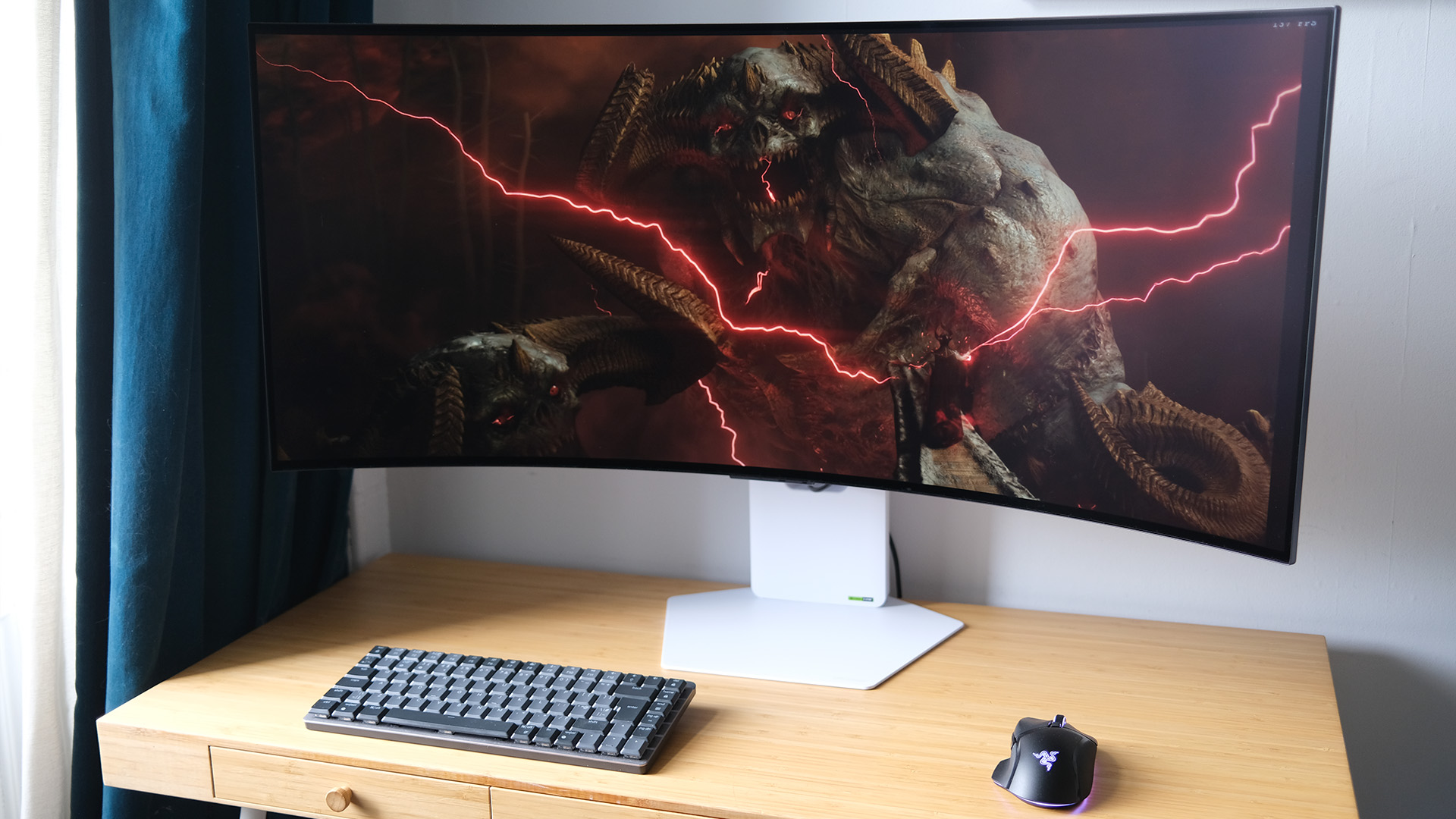
(Image credit: Future)
If you do run into games that don't have native 21:9 support, it's relatively easy to just crop the ratio down and accept some black bars at the edge of your screen. More and more games are launching with support as standard, though, since ultrawides are becoming one of the unique selling points of PC gaming in the first place.
I mentioned that the GX9 has speakers, which I found to be a mixed bag in performative terms. Their volume is quite something, but they noticeably lack detail and sharpness. They're fine for a casual session – and I'd much rather they were included than not – but not much of a replacement for a pair of the best gaming headsets available.
Between the speakers and the highly usable remote, it's pretty easy to set the GX9 up and swap between inputs on the fly. I found its software responsive and reliable, which is more of a rarity than you might think, even in high-end monitors.
LG GX9 review: Verdict
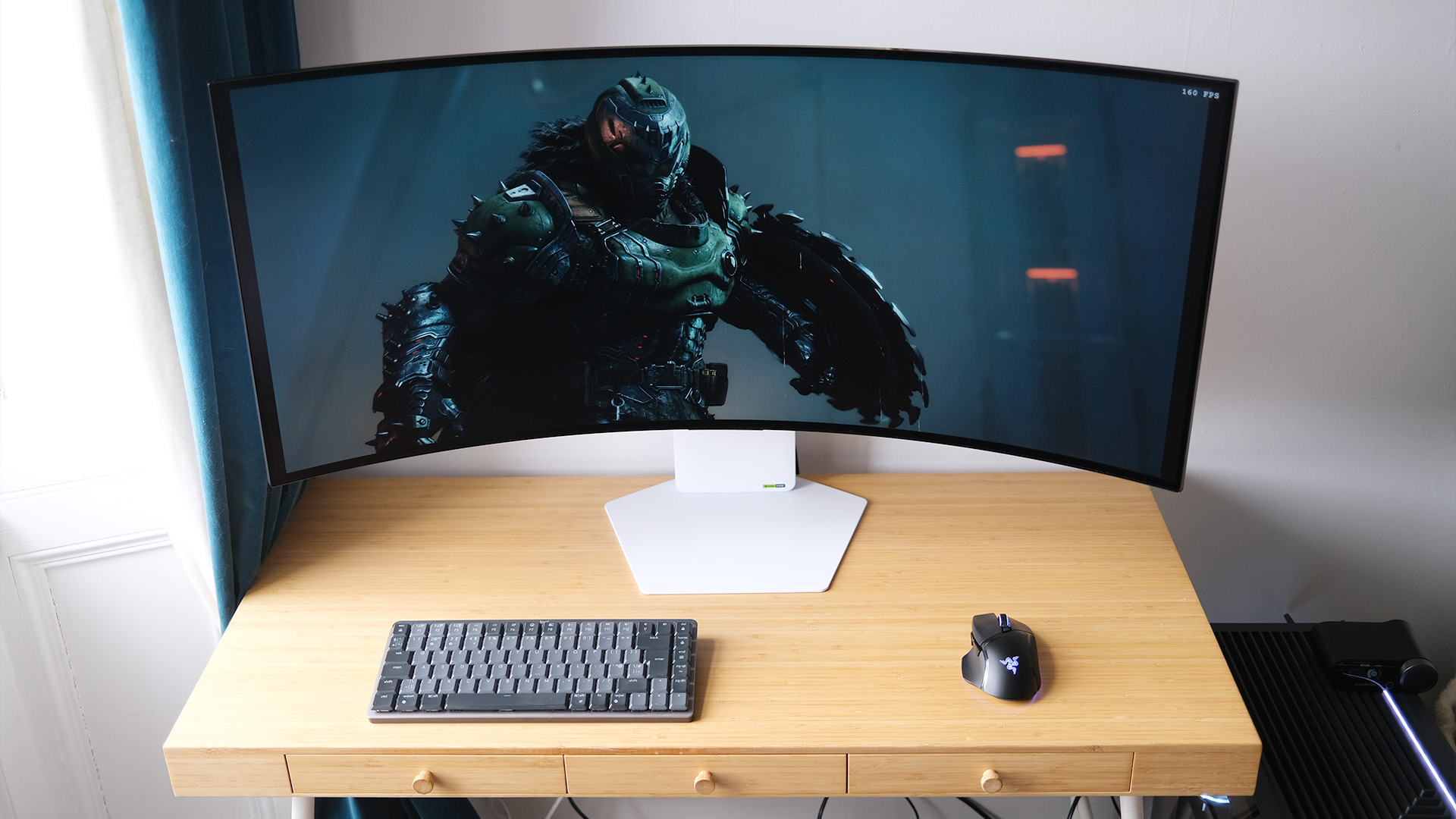
(Image credit: Future)
This is a beast of a monitor that won't work for everyone – you need the right setup and the cash to back your plan up. It's power-hungry and hulkingly large, but once you get it connected, it's hard to look back.
You'll forget its 39-inch size very quickly as you get enveloped in your favourite games, and the picture quality on offer can be stunning with the power of OLED's vivid presentation. If you're curious about ultrawides, the LG UltraGear GX9 could be the monitor to win you over.
Also consider
Another huge name in ultrawide OLED monitors is Samsung, so you'll want to check out the Samsung Odyssey OLED G9 for comparison's sake. It's also a beast of a screen, although its 32:9 aspect ratio makes it a little less desirable, in my opinion.
For those who aren't sure an ultrawide is right after all, a top 27-inch option could be a great alternative. The astounding Asus ROG Swift PG27AQDP has a crazy 480Hz refresh rate, which makes it ideal for aspiring competitive gamers.

-
 C114 Communication Network
C114 Communication Network -
 Communication Home
Communication Home


